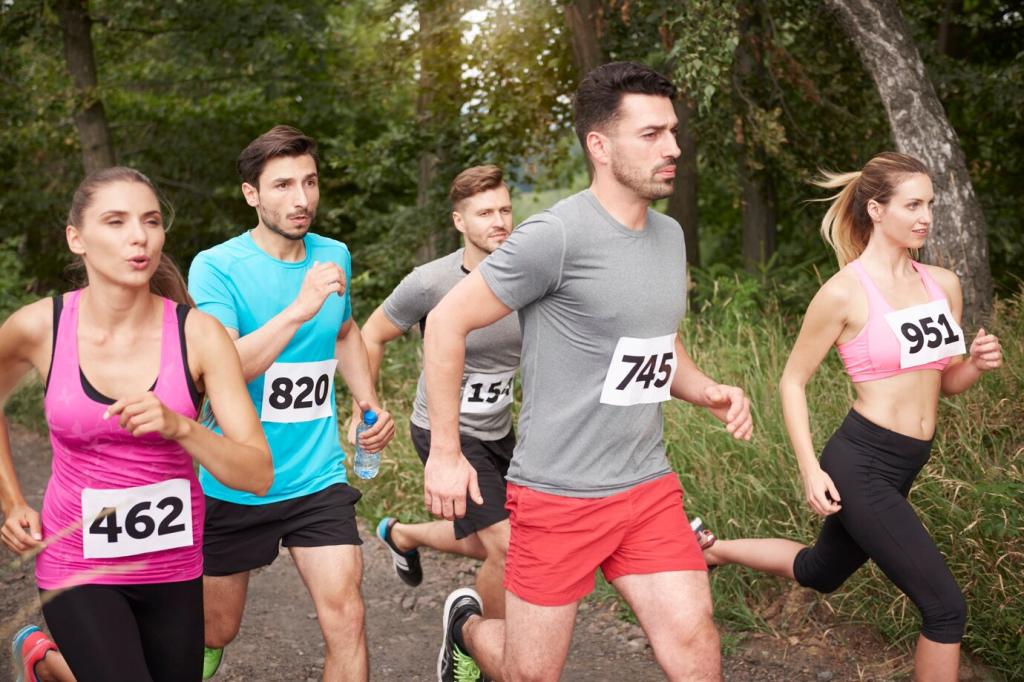
Preparing for Different Climates in International Races
Selected theme: Preparing for Different Climates in International Races. From blistering heat to sleet and thin air, this guide helps you train smart, race wisely, and enjoy the journey. If climate-savvy racing fires you up, subscribe and share your next destination with us.
Reading Weather Beyond Temperature
Go past the headline number. Dew point, humidity, wind speed, solar radiation, and WBGT can turn a mild forecast into a suffer-fest. Learn how each factor changes sweat evaporation, perceived effort, and safe pacing for an honest, achievable plan.
Build Your Personal Climate Profile
Log your sweat rate, heart rate drift, and pacing in various conditions over several long runs. Patterns emerge—maybe you thrive in dry cold but fade in humid heat. Use those data points to tailor target paces, fluid volumes, and gear choices for your next international start.

7–14 Day Heat Block
Schedule controlled heat sessions for one to two weeks: easy runs in warmer conditions, short tempo efforts, or post-run sauna sitting. Expect lower heart rate at a given pace, earlier sweating, and higher plasma volume. Respect recovery and watch for warning signs of heat illness.
Hydration, Sodium, and Carbohydrate Strategy
Test fluid intake in training to estimate needs when sweat pours. Combine water with electrolytes to support fluid absorption and reduce cramping risk. Pair a steady carb plan with cooling breaks; a modest, steady drip of carbs often outperforms huge, gut-burdening surges in high heat.
Pre-Cooling Tactics on Race Day
Arrive early to stay in shade, sip an ice slurry, and use cold towels on neck and wrists. A breathable singlet, white cap, and sunscreen reduce heat load. Commit to effort-based pacing early, then surge only if your body’s cues remain steady after halfway.
Smart Layering and Fabrics
Start with a wicking base to pull sweat off skin, add an insulating mid-layer if truly cold, and use a wind-blocking shell when gusts bite. Keep extremities warm with gloves and a headband. Avoid cotton, which traps moisture and accelerates chilling.
Fuel, Fluids, and Warmth
Cold increases energy cost as your body stays warm. Eat slightly more during long efforts, and consider warm drinks pre-race to take the edge off. Stash hand warmers for start corral comfort, then shed layers gradually rather than overheating in the first kilometers.
Managing Wind, Rain, and Ice
Respect wind chill; a light, breathable rain shell maintains core warmth without becoming a sauna. Use petroleum jelly on exposed skin, choose grippy outsole patterns or traction aids, and pack a dry bag for after the finish to protect against a post-race shiver spiral.
Altitude and Dry Air: Race-Week Decisions
Arrive Early or Just-in-Time
Common approaches: arrive 10–14 days early for partial adaptation, or arrive within 24–48 hours to race before full fatigue sets in. Choose based on your schedule and past responses. Either way, keep early sessions gentle and prioritize sleep and hydration.

Tropical Humidity: Pace, Skin, and Mindset
High dew points choke evaporation, so your sweat cools less effectively. Use effort or heart rate to guide early miles, easing pace to stay safe. Bank energy through halfway, then apply pressure only if breathing, form, and temperature feel stable.
Apply anti-chafe balm where seams rub, consider double-layer socks, and dust feet lightly with powder if it works for you. Rinse and dry quickly post-race to protect skin. A small towel and a spare pair of socks can feel like magic at the finish.
Cool your room, hydrate steadily with electrolytes, and take a brief lukewarm shower to bring core temperature down. Avoid heavy, late dinners and prioritize calm routines. A cooler body and quieter mind set the tone for disciplined, confident pacing.


Travel Logistics for Climate Shifts
Shift bedtime gradually in the week before travel, seek morning light on arrival, and anchor meal times to local hours. Gentle shakeouts help reset rhythms. Keep caffeine moderate as you settle, and avoid long, late naps that can sabotage night sleep.
Travel Logistics for Climate Shifts
Bring options: breathable singlet, light shell, gloves, hat or visor, sunscreen, anti-chafe balm, and socks you trust. Pack duplicate race kits to hedge against surprise rain. Test everything in training so nothing on race day feels new or questionable.
